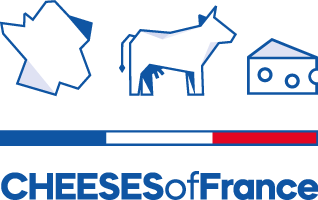How to choose cheese
When there are 1,200 cheeses on offer, it can seem difficult to choose one for the evening. Should you opt for a particular region, shape, maturity, cow’s or goat's cheeses? It’s not always easy to know how to make up a beautiful cheese platter. While we’re not trying to represent all of the 13 French regions in one platter, we can still marry families of cheese, intertwine textures and play with colours to create infinite combinations. Cheese is a spectrum of delights.
Surprise yourself!
Dare to try cheeses you haven't had before. Tickle the imagination of your cheesemonger - they’ll open up new worlds to you!
Seek advice. If you’re lucky enough to have one in front of you, a master cheesemaker is the best guide to good produce. Tell them what you’re looking for in terms of flavours or textures: strong or mild, creamy or firm. Don’t hesitate to taste shapes that are less engaging – you’ll be astonished by their flavour! Be specific about what you want and expect: depending on whether you eat it every day or occasionally, with cheese connoisseurs or novices, the advice a professional gives you won’t be the same. But if there’s no cheesemonger available, specialists working in the cheese section are also a good source of advice. Lastly, if nobody is available, trust your instinct. Examine the dates on the cheeses that indicate how long the product has been aged for, inspect them, touch them, smell them (smell is an indicator, even through the packaging). Sensory indications are often a good guide.

© CNIEL
Cheese seasons
Cheeses are seasonal products. It is thus advised to stick to the ideal periods for consuming cheese, taking account of the maturation time and process, so that the cheeses can fully express their qualities.
- In spring, livestock graze in the fields, and the milk takes on new aromas that will enhance the cheeses: during this period, the cheeses prosper, and will be at their best once summer comes.
- In summer, their maturation complete, the cheeses arrive at stalls fully mature. It’s the season to enjoy the finest Camemberts, Saint-Nectaires and more generally, all soft cheeses, cheeses with washed and bloomy rinds. Then the intense heat of the summer progressively dries out the green grass and summer milk leads to sweeter aromas in autumn.
- Autumn injects new vitality into the fields, leading to regrowth. This is how blue-veined cheeses retain their summery flavours, goat’s cheeses regain strength and soft cheeses persist.
- Winter is synonymous with bad weather and excess humidity, with no fresh grass for livestock, who feed on hay and, in the worst case, silage. Their milk is less rich and less typical, and the cheeses produced are far from optimal in terms of taste. There is one exception, Vacherin-Mont d’Or, traditionally produced in autumn/winter, whose formula is so original that it gives this season a wonderful quality.
Mature cheeses, cheeses with a long aging period (Cantal, Laguiole, Salers and others, Comté, Beaufort and Abondance) are delicious all year round. When produced during the grazing season (spring and summer), their centre is more yellow than those produced in winter.
Buy small amounts
Buy cheese more often, in small amounts. Keeping a cheese for a long time at home in conditions that are often unsuitable will cause it to lose softness and its taste will change. Optimal conditions for tasting guarantee cheeses that are always ready to eat.
What flavours do cheeses have?
Tasting a cheese is an experience that leaves our sensory organs in a state of excitement. The look, texture, smell and taste bring into play our sight, touch, hearing and our olfactory and gustatory sense organs (nose, tongue and mouth).
 繁體中文
繁體中文  简体中文
简体中文  한국어
한국어  Français
Français 
